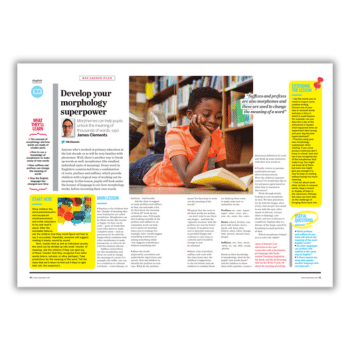In this morphology KS2 lesson plan, pupils will look under the bonnet of language to see how morphology works, before inventing some words of their own.
Anyone who’s worked in primary education in the last decade or so will be very familiar with phonemes – the smallest unit of sound that a word can divided into.
Well, there’s another way to break up words as well: morphemes are the smallest individual units of meaning.
Every word in English, from the smallest to the longest, is constructed from a combination of roots, prefixes and suffixes. It is these that provide children with a logical way of working out the meaning of an unfamiliar word.
Morphology KS2 learning objectives
- Learn the concept of morphology and how words are made of smaller parts
- Use knowledge of morphemes to make sense of new words
- Find out how suffixes and prefixes can change the meaning of words
- Discover how the English language has changed over time
Starter activity
Show children the word pneumonoultramicroscopicsilicovolcanoconiosis. Invite volunteers to try and read it aloud.
After the inevitable failures, ask the children how they could figure out how to say it accurately. Hopefully, someone will suggest reading it slowly, sound by sound.
Next, explain that as well as individual sounds, the word can be divided up into small ‘chunks’ of meaning. Ask the children if they can spot any of these ‘chunks’ that they recognise from other words (micro, volcano, or ultra, perhaps).
Take predictions for the meaning of the word. Tell the class that we’ll return to find out if they’re right later (oh, the suspense!).
James Clements is an education writer and researcher with a fascination for language. His books include Teaching English by the Book and On the Write Track, all about the teaching of writing.














